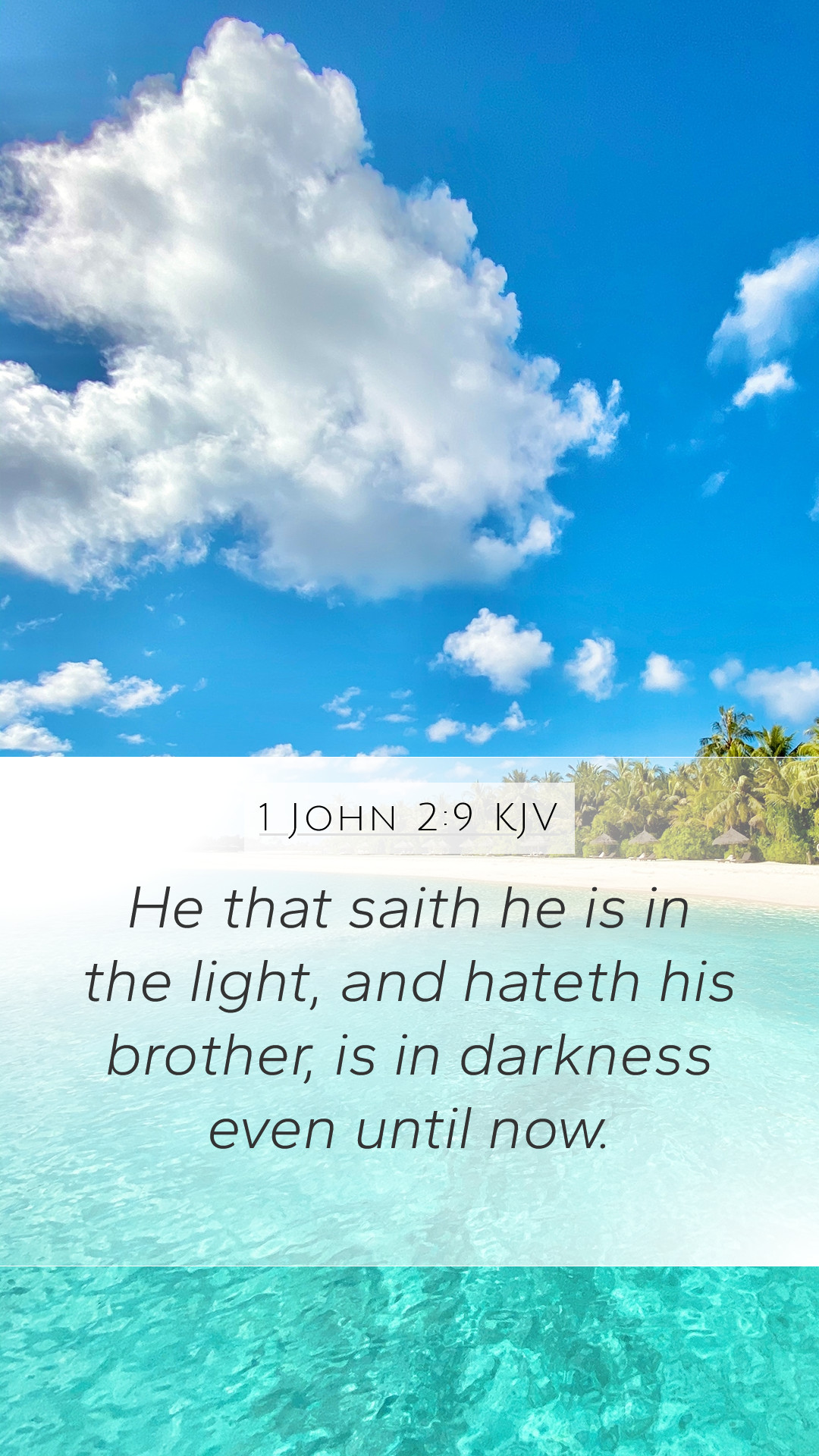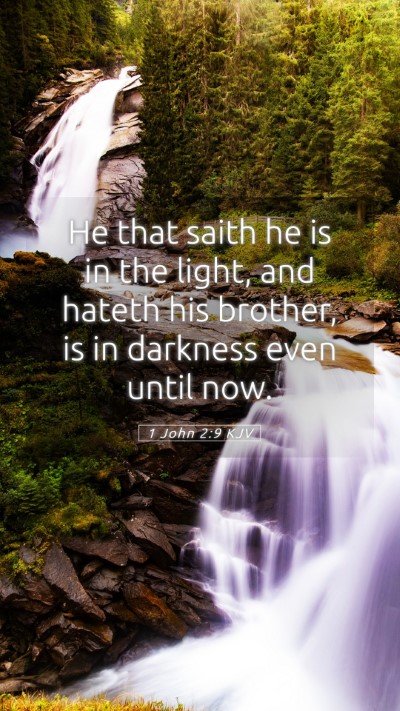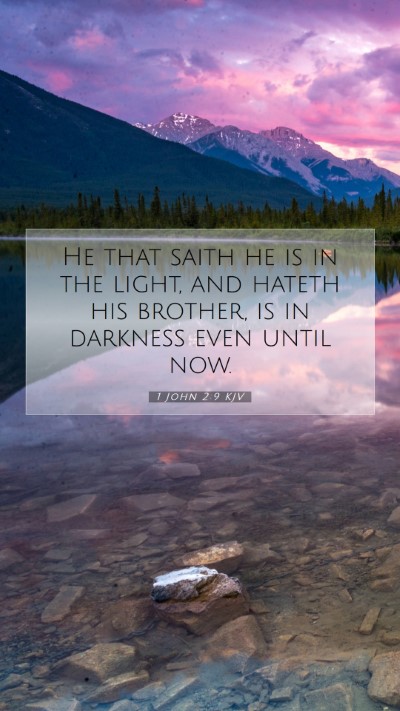Understanding 1 John 2:9
Verse: 1 John 2:9 - "He who says he is in the light, and hates his brother, is in darkness until now."
This verse serves as a foundational truth in the epistle of John, emphasizing the interconnectedness of love and light in the life of a believer. The implications of this scripture call for a deeper Bible verse understanding and Biblical exegesis. Below, we explore the insights derived from renowned public domain commentaries such as Matthew Henry, Albert Barnes, and Adam Clarke.
Key Themes
- Light vs. Darkness: John often uses the metaphor of light to symbolize truth, righteousness, and fellowship with God, contrasting it with darkness, which symbolizes sin, ignorance, and separation from God.
- Love and Hate: The profound relationship between love for others and one’s relationship with God is critical. Hatred indicates a failure to recognize and receive the love that God offers.
- Self-Deception: The verse warns against self-deception. Claiming to be in fellowship with God (in the light) while harboring hatred (in darkness) reveals a fundamental inconsistency in one’s faith.
Commentary Insights
Matthew Henry
Henry stresses the seriousness of this contrast between light and darkness. He remarks that true believers will manifest love toward their brethren and that to claim the light while hating others is to demonstrate spiritual blindness. The failure to love indicates a failure to truly know God, who is light.
Albert Barnes
Barnes brings attention to the moral ambivalence in claiming spiritual status while engaging in unloving behavior. He points out that such contradictions arise from a failure to grasp God’s nature. The implications of John's assertion challenge readers to reflect on their own lives and to actively cultivate a love that reflects Jesus’ example.
Adam Clarke
Clarke elaborates on the responsibilities inherent to being part of the "light." He emphasizes that to walk in the light means to live in accordance with God’s truth, which is demonstrated through the love shown to one another. The idea that one can hate fellow believers contradicts the very nature of Christian discipleship, shedding light on the severity of this moral failing.
Application and Reflection
Applying Bible verses to daily life: This verse compels Christians to regularly assess their relationships with others. Daily interactions should reflect Christ’s love. Engaging in Bible study groups and online Bible study experiences can provide opportunities for accountability and growth in grace.
Understanding difficult Bible passages: In grappling with the message of 1 John 2:9, believers are encouraged to reflect on how their attitudes toward others may affect their relationship with God. How they express love—both in thoughts and deeds—serves as a barometer of true faith.
Cross References
- John 13:34-35 - The commandment of love among believers.
- 1 John 4:20 - The inconsistency of hating a brother while claiming to love God.
- Ephesians 5:8-9 - Transition from darkness to light in living as children of light.
Conclusion
1 John 2:9 acts as a sober reminder that true fellowship with God is inextricably tied to our relationships with others. The meaning of Bible verses like this one extends beyond theological understanding; it demands a tangible expression of love in the community of believers. As we engage with such difficulties in Bible study materials and Bible study guides, may we strive for authenticity in our faith and relationships.


